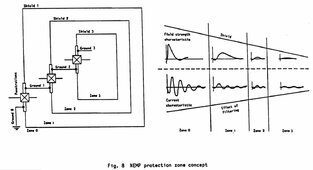I read a military EMP prep manual once long time ago. It was full of things like "cast steel enclosures for critical equipment need to have at least 12mm (half inch) wall thickness and be equipped with lead seals". I'm not sure what this tells us about the suitability of your typical mesh Faraday cage or aluminium foil, but at the same time if our solar install is half a mile from a small nuke blast, we're likely to have worse problems than EMP protection.
I think there are a lot of things one can do to increase resilience. This will follow the typical resilience curve.

Initially you can make great gains in your system's resilience with very little effort.
Things like surge protectors. For example my current array has no surge protection at the panel end of the main wire. I have 4s4p array, then 25m of underground wire, a surge protection and the inverter. Probably adding surge protection at the panel rack is a very good idea.
But then, what is a "good ground" in terms of surge protection (as good as you can get - I know, I know

). Here the legal requirement for house ground is below 7 ohms I think(it was long time ago I read it). In a clay soil with pockets of sand that is very difficult to get sometimes and to measure it easily you need a very expensive equipment.
I managed to get my solar system ground to about 4ohms,but it took lots of grounding rods. I'd love to find out if there is an easy straightforward method to measure grounding quality without hiring a very expensive meter.




